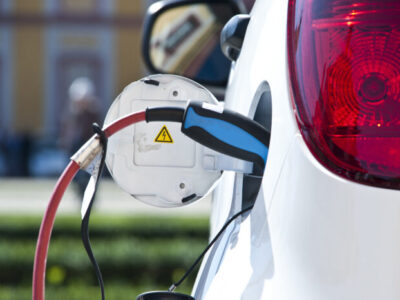A broad consortium of experts is working to reduce anxiety about EV charging. Customer perception of the charging experience may impact potential buying behavior, even while the market is growing.
In fact, according to the International Energy Agency (IESA), over 250,000 electric cars were sold every week in 2023, more than the number sold in a year a decade ago. They project that in 2024, the market share of electric cars could reach up to 45% in China, 25% in Europe, and over 11% in the United States.
However, drivers with range anxiety fear their vehicle cannot cover the distance needed to reach their destination with enough battery power (or fuel, not only for EVs), which could leave them stranded halfway there.
And, this concern can make EVs seem less practical and negatively impact a potential customer’s buying decision.
And lower EV adoption rates can, in turn, slow down the growth of the electric vehicle market, which can impact manufacturers, charging infrastructure providers, and related industries.
The ChargeX Consortium Challenge
For these reasons, the ChargeX Consortium (also known as the National Charging Experience Consortium) is working to ensure that charging technology works.
Their goal for public charging stations nationwide is that customers can charge vehicles the first time, every time.
However, today, customers of public charging stations and EV drivers frequently need help with problems, such as lengthy wait times, trouble starting charging sessions, and slow charging speeds.
Realizing that much of their current data is focused on business operations, the consortium has defined the charging experience from the customer’s perspective.
The group realized that charging station operators (CSOs) are often perceived as responsible for the charging experience. However, many other stakeholders share this responsibility, including EV manufacturers, charger manufacturers, and electric mobility service providers (such as third-party map and payment app developers).
So the ChargeX Consortium established a working group comprising charging station operators, charger manufacturers, EV manufacturers, field service providers, national laboratories, consumer advocacy and non-profit organizations, and academia specializing in EV charging customer research.
Customer-Focused Charging Metrics
In its recent report, Customer-Focused Key Performance Indicators for Electric Vehicle Charging, the Consortium has described the key components of the customer experience.
They include:
- Identifying, navigating to, and locating a public charging station with confidence that it will meet the customer’s needs due to accurate and precise information about the location and services provided.
- Gaining physical access to a functional charger without delay.
- Starting a charge with easy and reliable payment authorization and plug-in process.
- Completing a charge when the EV’s battery reaches the customer’s desired state of charge. This includes the rate of charging progress, steps to stop charging, unlocking the connector from the EV, and unplugging. It also includes communicating information about the charging session, including the amount of energy delivered and the total cost paid by the customer.
- Getting help if a problem occurs while trying to access a charger, start a charging session, or complete a charging session.
- Feeling safe and comfortable, including the charging station location, layout, lighting, level of upkeep and repair, and amenities.
For each step of the charging experience, the Consortium identified common pain points customers have experienced and ranked them according to significance. It is developing Key Performance Indicators that will enable the Consortium to quickly understand which aspects of the customer experience are working and which are not.
With this multi-stakeholder, KPI-driven approach, we can look forward to the time when customers expect to be successfully charged the first time, every time.








